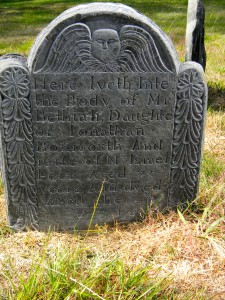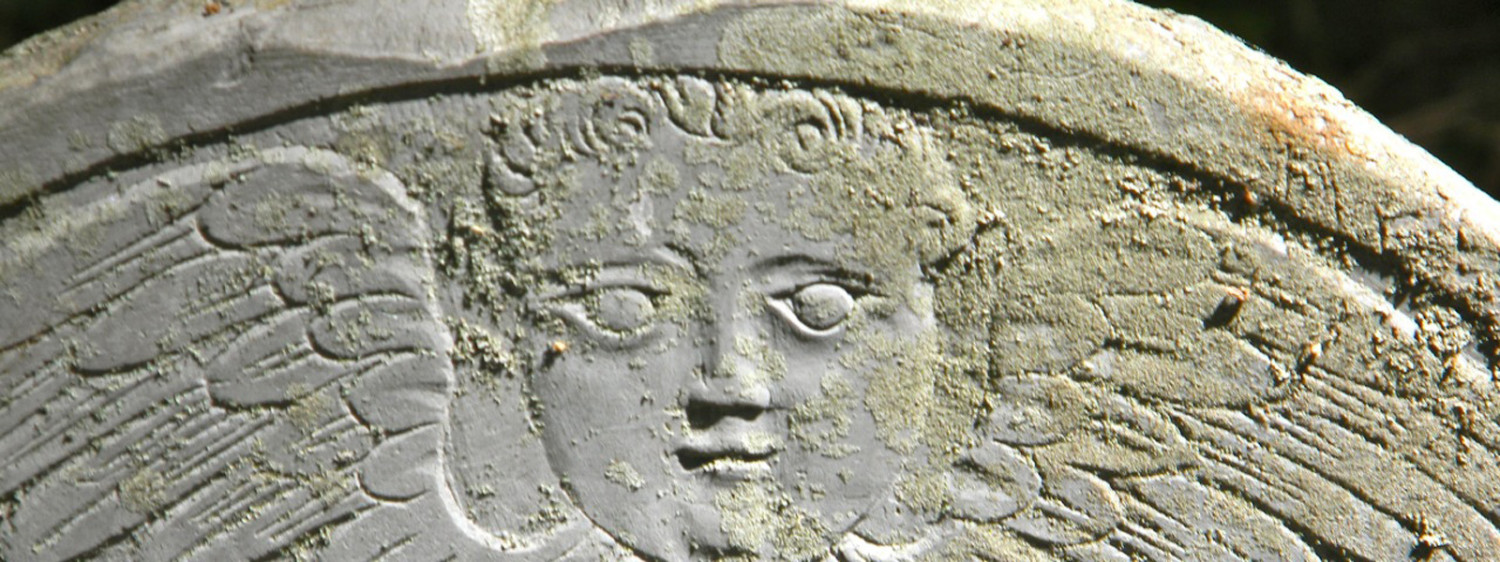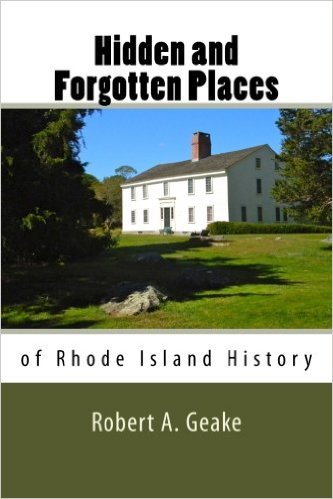Death notices began to appear in America with the first newspapers. A community-wide extension of the early notices on tavern and meeting house doors, these first notices were sparse, containing little more than the date of death, unless extenuating circumstances caused more to be written about the cause of death. This article concerns death notices that appeared in certain Rhode Island newspapers for those who died by accident, or met another unfortunate end. As will be seen, these death notices transformed from sparse mentions of the causes of death to more detailed descriptions of the causes of death.
Ultimately, these death notices are testament to a much more precarious time in one’s daily life, when the work that average Rhode Islanders performed, the modes of travel, and sometimes the weather, were all fraught with danger. Newspaper readers were wary of the unexpected tragedy that might befall them.
In Rhode Island, the first death notices were printed in the Rhode Island Gazette, which debuted on September 27, 1732. The newspaper lasted little less than a year. It was not until June 12, 1758 that another newspaper appeared, named the Newport Mercury, published by James Franklin, the nephew of Benjamin Franklin, then living in Newport. James Franklin died in 1762, and his mother Anna Franklin continued to publish the newspaper for another year before passing it to Samuel Hall, Franklin’s son-in law. The paper was sold in 1768 to Solomon Southwick, a prominent Newport Whig (meaning a supporter of the American struggle against British colonial rule). When the British invaded Newport in 1776, Southwick reputedly buried his press in the city and fled the state. After the British evacuated Newport in October 1779, Southwick returned and began publishing the newspaper again, issuing a new edition of the Newport Mercury on June 5, 1780. [1]
The following gleanings from the Newport Mercury, from 1774 to 1799, reflect the sparseness of early death notices, as previously noted:
April 25, 1774: Stanton, Benjamin, last Tuesday, found in gully near Baker’s Spring with head cut.
May 30, 1774: Smith, Mrs. Sarah, last Thursday, her son Isaac was married about the same time.
January 2, 1775: Morgan, Mrs. Elizabeth, a noted mid-wife.
June 12, 1775: Hudson, John, carpenter, fell from stage.
October 2, 1775: Bristow, William, son of widow ______ Bristow, drowned from capsizing a boat, aged 23 years.
July 13, 1782: Hookey, Betsey, drowned
……………, Lydia, drowned
May 15, 1786: Irish, Constant, of Charles, aged 20 years, drowned from a scow this morning at Newport.
……, Jonathan, of Charles, aged 25 years, drowned from a scow this morning at Newport.
October 20, 1795: Aldrich, Thomas, died at Meeting in East Greenwich, very aged.
August 10, 1799: Congdon, John, son of John (Esq.), killed by lightening at Prudence Isle.
The first issue of what became known for short as the Providence Gazette was published on October 20, 1762, as The Providence Gazette and Country Journal. The slogan beneath its banner promised a newspaper “Containing the Freshest of Advices both Foreign and Domestic.” This was true of its death notices and obituaries as well, informing the reader of the demise of political, social, and eccentric figures from around the globe as well as the nation. It also provided, in its matter of fact manner, the odd and unusual deaths that occurred. As with the Newport Mercury, the paper’s early sparse death notices reflected the daily hazards of agricultural and maritime work that dominated the Rhode Island economy during this period. The Providence Gazette was begun by William Goddard, and later run by Sarah Updike Goddard and John Carter, whose print shop at “Shakespeare’s Head” in Providence can still be found today. [2]
The opening listing from the Providence Gazette below was the first death notice of a slave in the colony.
December 30, 1762: Bosworth, ______, a negroe servant of Edward Bosworth, at Warren, fell backwards over a stone near his master’s door, fractured his skull so severely that he died in a few minutes.
January 29, 1763: Carpenter, Colonel ______, of Rehoboth, thrown from his horse on journey between Providence and Boston.
April 4, 1764: Brown, Allen, Esq.; his two negro servants were sailing a deeply laden scow down the river, the scow sank about two miles from shore and one was drowned.
July 30, 1767: Brown, ______, son of Nicholas, aged 4 years, fell from wharf and drowned.
June 12, 1773: Beadle, Christopher; a deranged man, jumped from a vessel near Starvegoat Island, by help of a spar drifted to a rock a mile to the eastward, where he remained till morning, from where it is supposed he was drowned, June 3, 1773; June 9, the body was found near Sabin’s Point and interred.
February 25, 1775: Barton, Andrew, of Pawtuxet, his child fell into a kettle of boiling water, died three days after.
February 25, 1778: Barnes, Levi: Barnes, Peleg, drowned in crossing the river from Warwick in a boat. . . .
July 11, 1778: Brooks, William, executed at Worcester for the murder of Joshua Spooner, late of Brookfield. Buchannan, James, executed at Worcester for the murder of Joshua Spooner, late of Brookfield.
November 23, 1778: Bushby, John, of Colonel Vose’s regiment, shot for desertion. He had been three times under sentence of death for like offence and had been twice pardoned at Providence.
December 30, 1794: Brown, ______, at North Kingstown, aged 17 years, from an accidental discharge of a fowling piece, which ball cut an artery in his thigh and caused him to bleed to death in about four hours.
October 20, 1797: Burr, Mrs. Martha, wife of Elisha, and daughter of Col. Peleg Gardiner of Swansea. She was married to Mr. Burr Feb. 7, 1795; was subject to insane freaks. On one occasion swallowed a silver spoon which was taken from her stomach after death, a period of 185 weeks after being swallowed . . . she finally caused her death by tying a string around her throat which caused strangulation. At Rehoboth.
September 11, 1798: Aldrich, Gideon, at Smithfield, by the overturn of an ox cart.

Bethia Bozworth gravestone, carver unknown, in the North Burial Ground in Providence (Robert A. Geake)
The Providence Journal made its first appearance on January 3, 1820 as a semi-weekly newspaper, published on Monday and Thursdays. The gleanings that follow are taken from the first decade of the newspaper’s existence. The notices from the Journal reflect the advent of “death journalism,” often with graphic descriptions of the subjects death. This development also reflects the public’s continued fascination with unfortunate endings of the lives of both ordinary and extraordinary people from around the globe. [3]
The following are from the Providence Journal from 1820 to 1829.
March 30, 1821: Taylor, Charles, aged 18 years, while standing on Weybosset Bridge he fell (probably in a fit) into the water and was drowned.
May 14, 1821: Cobb, Mrs. Peggy, at Portland, age about 40 years; suddenly, drank a quart of rum.
November 1, 1821: Foster, Judge ______, at Pennsylvania, was killed by his son, they were hunting wolves and had separated; each howling to attract the wolves, when the son mistook the back of his father for a wolf and fired with fatal effect; the son ran towards home to procure relief but became hopelessly insane, and ever remained so afterwards.
November 26, 1821: Bond, Sarah, in England, a very eccentric character, a miser and a recluse, having a bitter dislike of men whom she called “beasts” and women something worse, declared she had no blood relative on earth, had, in 1812, £45,000 in funds who she said only the King could have.
December 20, 1821: Treadwell, Bradley, at Weston, CT., aged 31 years, was supposed dead; revived after 4 hours; said he had seen a beautiful city and then died.
March 23, 1822: Sumner, Keriah, wife of Ebenezer, aged 59 years at Milfred, Mass., after an illness of 4 years. She had drawn from her 2041 pounds of water, allowing a pint to weigh a pound and 32 gallons to a barrel, she had eight barrels, lacking one pint.
April 10, 1823: Cole, Joseph, housewright, in 45th year, from a wound of a chisel, which he carried in his pocket, and upon which he incautiously sat down.
January 26, 1824: Armington, Bowers, of Pawtucket, found hanged near Scotts Pond, a suicide.
July 22, 1824: Clark, Thaddeus, age 7 years, he drank a quantity of rum which the haymakers had carried into the field, probably unaware of its contents, he died 24 hours afterwards.
August 14, 1824: Short, Mrs. ______, wife of Ebenezer, had been on a visit to a neighbors and returning home the horse took fright, she was thrown from the wagon and so fractured her skull that when found she was lifeless, at Seekonk.
April 4, 1825: Sears, Martha, wife of Caleb S., at Springfield, aged 35 years, severely hurt but lived twenty days in agony.
May 1, 1825: Aborn, George B. a youth, drowned in Providence River with three others.
February 13, 1826: Ryder, Barnabas, age 44 years, in a gale a door blew off and struck him in the head causing death in a few hours, at Yarmouth.
April 23, 1827: Fairchild, Samuel, age 30 years, is said to have committed suicide by drinking hop tea and putting the steeped hops on his head, at Sherman, Ct.
April 23, 1827: Gill, Jane, age 17 years; returning home after dark she was met by an idle young man with a horrid mask on; what was fun for him was the death of her as she survived the fright but a few days, at Cambeckside, Eng.
June 27, 1827: Carr, Miss Betsey Miller, of Capt. Caleb, 2d, in 21st year, at Warren; she was returning home from a visit to a neighbor with friends, and was so frightened at some real or imaginary object by the wayside, as to cause her immediate death.
August 23, 1827: Rose, Charles, age about 30 years, at the Asylum, Bristol, was found in a demented condition and delirious, and taken to the asylum where he revived, to say he was from Scituate, Mass., a mason by trade, had a brother Rowland, at Watertown; the fever returned and he died.
February 6, 1828: Woodruff, James, at Fayette, N.Y., aged 47 years; he said an angel told him in a dream to keep beastly drunk for 9 days and nights and if he survived he would be saved; he drank a gallon a day and would be saved but did not survive.
The death notice became transformed into what we know today is an obituary by the time of the Civil War, when florid prose of memorials to the fallen soldiers on both sides would frequently appear in newspapers of the day. Historian Mitchell Stevens writes that obituaries were historically written about soldiers, public servants, celebrities, and adventurers, as people gravitated toward learning the details of such peoples’ lives, and the circumstances of their deaths. [4] [Banner image: Gravestone of Elizabeth Greene, died 1764, carved by Henry Emmes, in the family cemetery at Spring Green (Robert A. Geake)]
Notes:
[1] Samuel Arnold, Vital Records of Rhode Island, vol. VIII (Providence: Narragansett Historical Publishing Company, 1903), p. 3 and pp. 37-88. [2] Ibid., pp. 99-542. [3] Ibid, pp. 17-95; Samuel Arnold, Vital Records of Rhode Island, vol. VII (Providence: Narragansett Historical Publishing Company, 1903), pp. 397-616. [4] Funeral Society of America, see http://www.funeralinformationsociety.org
























